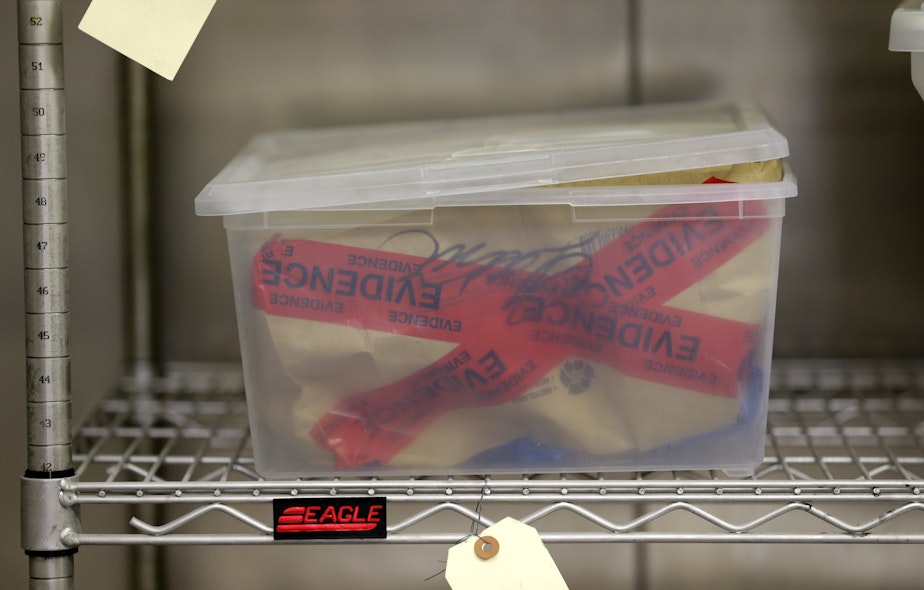Missed crime lab evidence could've stopped Green River Killer decades earlier, investigation finds

In 2001, Gary Ridgway was arrested for the murder of nearly 50 women and girls. During the 1980s and 1990s, detectives struggled to catch the suspect known as the Green River Killer.
But according to some new investigative reporting, the Washington State Crime Lab overlooked some key evidence that could have linked Ridgway to the killings as far back as the 1980s, before he took more lives.
NBC News reporter Lewis Kamb talked with KUOW’s Kim Malcolm about the overlooked evidence — microscopic particles of a unique paint, that were found on the very first victim.
This interview has been edited for clarity.
Lewis Kamb: This was a very distinct brand of DuPont-made paint that wasn't sold to the general public. Before 1984, it was used primarily as industrial and commercial paint. And in the Seattle area, it was only used widely by the Kenworth truck company where Gary Ridgway worked.
How did this evidence get missed?
They were basically looking at only certain kinds of trace evidence — hairs, fibers and larger particle trace evidence. Back then it was also kind of the knowledge base of forensic science to look at hairs and fibers. So they keyed in on that evidence, and they did so at the neglect of smaller particle evidence that contained the key clues of these paint spheres.
You wrote about someone named Skip Palenik. He had a big role to play in this story. Tell us about him.
Sponsored
Skip Palenik is a world renowned trace evidence expert. He was in Seattle in 1985, to teach a course at the crime lab here. And while he was here, he learned about the Green River case, he ultimately was told by the lab director that if there was ever a suspect, we're going to bring you back into the case.
But he never got a call. And almost 20 years later, when he ultimately did get called into the case, he found these paint spheres. And in retrospect, he says, "I could have found the same evidence 20 years earlier."
What’s the biggest lesson to be learned from this?
I think in this case, it was changing techniques or strategies. The crime lab had ample opportunity to do that over nearly 20 years on this case. And their focus primarily was on this larger trace evidence, hairs and fibers. And when that wasn't fruitful year after year, could they have changed tactics and strategies, and tried different things?
And that’s what the trace evidence supervisor talked with me about. She felt in retrospect, it always bugged her that they didn't do that. And ultimately, she felt they probably should have changed course. But they didn't.
Sponsored
Listen to the interview by clicking the play button above.





